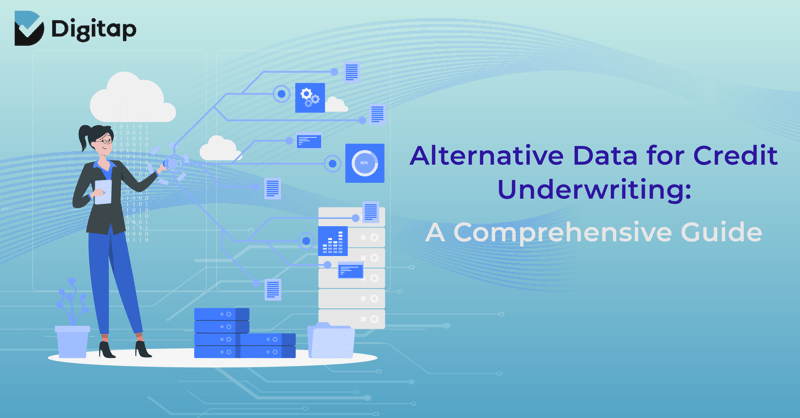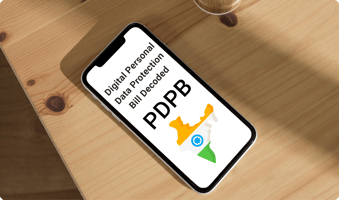Alternative data for in-depth financial analysis

Introduction to Alternative Data
Alternative data refers to information that is not commonly found in traditional credit reports, and it is increasingly being used to evaluate the creditworthiness of consumers. This type of data provides lenders with a more comprehensive view of a borrower’s financial health, enabling them to make better-informed lending decisions. By leveraging alternative data, lenders can improve risk management and expand financial access to underserved populations.
As the financial landscape evolves, lenders are increasingly recognizing the need for alternative data in credit underwriting to improve risk management and financial inclusion. In this comprehensive guide, we'll explore the benefits of using alternative data, discuss various sources of such data, and highlight how companies like Digitap.AI are leveraging it to build complex credit underwriting models.
The Importance of Alternative Data in Credit Underwriting
The use of alternative data in credit underwriting has gained significant traction in recent years as lenders seek to enhance their risk management capabilities and broaden their customer base. This trend is driven by the need for:
- Financial inclusion: Millions of adults worldwide lack a mainstream credit file or are not scoreable by conventional models. Alternative data enables lenders to assess the creditworthiness of these individuals, promoting financial inclusion and expanding lending opportunities.
- Better risk management: Traditional credit data may not provide a complete picture of a borrower's financial situation. Alternative data sources can supplement this information, allowing lenders to identify potential risks and make more accurate credit decisions.
- Streamlined underwriting processes: Incorporating alternative data into automated underwriting systems can increase the speed and accuracy of credit decisions, leading to improved customer satisfaction and reduced operational costs.
Check out this article on Why Credit Bureaus Seek Alternate Data Partnerships For Holistic Credit Scores.
Types of Alternative Data
There are several types of alternative data that can be used to enhance credit underwriting processes:
- Bank Statements: Analyzing bank statements can provide valuable insights into an individual’s income, spending habits, and overall financial health.
- Device Data (via SMS): SMS data can be used to verify a borrower's identity, track financial transactions, and monitor credit-related activities.
- E-Commerce Platforms: Data from e-commerce platforms can reveal a consumer's online shopping habits, payment history, and credit utilization.
- Employment Data: Details about a borrower's employment history, income, and job stability can help lenders assess their ability to repay a loan.
- Telecom Data: Mobile phone usage and payment records can provide insights into a borrower’s financial behavior and creditworthiness.
- Email: Analyzing email data can help lenders identify potential fraud, verify employment and income information, and gain insights into an individual's financial habits.
Here's a diagram to showcase the difference between traditional credit data and alternate credit data:

How Alternate Data is Helping in Credit Underwriting?
Traditional credit underwriting relies heavily on credit reports and scores from major credit bureaus. However, this approach has several limitations:
- Incomplete information: Traditional credit reports may not capture all relevant financial information, leading to an incomplete assessment of a borrower's creditworthiness.
- Limited access to credit: Individuals without a credit history or with a thin credit file may be deemed high-risk or unscorable, limiting their access to credit.
- Slow and manual processes: Traditional underwriting methods can be time-consuming and prone to human error, resulting in inefficiencies and higher costs.
Leveraging alternative data in credit underwriting can lead to several advantages:
- Enhanced risk management: By incorporating alternative data, lenders can obtain a more comprehensive view of a borrower's financial situation, enabling them to make better-informed credit decisions and manage risk more effectively.
- Increased financial inclusion: Alternative data can help lenders accurately assess the creditworthiness of individuals with limited or no credit history, expanding access to credit and promoting financial inclusion.
- Improved operational efficiency: Integrating alternative data into automated underwriting processes can streamline workflows, reduce manual tasks, and lower operational costs.
Conclusion
Alternative data is transforming the credit underwriting landscape by providing lenders with a more comprehensive view of borrowers' financial situations and enabling more accurate risk management. Companies like Digitap.AI are at the forefront of this revolution, leveraging alternative data to build sophisticated credit underwriting models and streamline lending processes. By embracing alternative data, lenders can enhance their risk management capabilities, promote financial inclusion, and improve operational efficiency, ensuring long-term success in an ever-evolving financial landscape.
The use of alternative data in credit underwriting is expected to grow in the coming years, driven by advances in technology, increased access to data sources, and a greater focus on financial inclusion. As the financial landscape continues to evolve, lenders that successfully integrate alternative data into their credit underwriting processes will be better positioned to manage risk, expand their customer base, and thrive in a competitive market.
Digitap.AI: A Pioneer in Alternative Data-Driven Credit Underwriting
Digitap.AI harnesses the power of alternative data to build complex credit underwriting models that automate risk management. The company extracts financial and non-financial information from various sources, including bank statements, device data, e-commerce platforms, employment data, telecom data, and email, to develop sophisticated analytics for credit underwriting. Digitap.AI focuses on several areas to enhance credit underwriting processes using alternative data. Majorly in the areas of analytics for automated credit underwriting, Fraud detection and User profiling.
As alternative data gains popularity in credit underwriting, it's essential to ensure that its use complies with relevant regulations, such as the Fair Credit Reporting Act (FCRA). Lenders must ensure that alternative data sources are accurate, disputable, and correctable, while also safeguarding consumers' privacy and preventing discrimination.
To know more about the Digitap API solutions Click here
Book a Demo or write to us at info@digitap.ai to get started.


